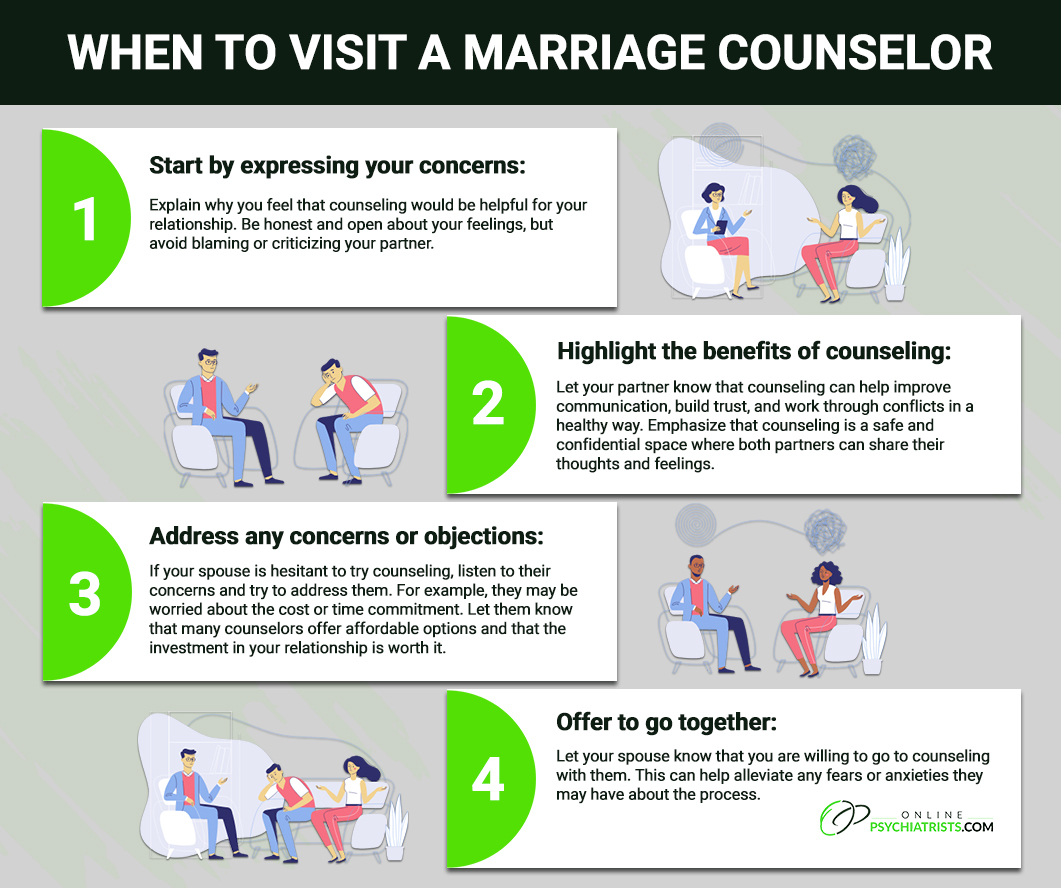A Biased View of Aim Point Counseling
Table of ContentsFacts About Aim Point Counseling UncoveredAn Unbiased View of Aim Point CounselingThe Single Strategy To Use For Aim Point CounselingThe 7-Second Trick For Aim Point CounselingAll About Aim Point CounselingThe smart Trick of Aim Point Counseling That Nobody is Discussing
The longitudinal layout includes a pre-treatment study and 2 follow-up surveys at 3- and 12-months post-intervention. The research study is embeded in 8 Relationships Australia Victoria centres, throughout municipal, external residential areas, and regional/rural sites. Relationships Australia, a non-government organisation, is the largest supplier of pair counselling and partnership solutions in Australia.

These high prices of relationship breakdown have actually been regularly associated with negative wellness repercussions for both grownups and youngsters complying with divorce/separation.
The Ultimate Guide To Aim Point Counseling
The impacts of separation and separation can be detrimental, study suggests that high partnership discord in undamaged couples is also most likely to have unfavorable end results.
Aspects that affect the results of these solutions need complete examination. Research to day has actually recognized both couple and individual factors that might add to connection dissonance. These include partnership complete satisfaction and commitment at the couple degree, and clinical depression at the specific level. Nevertheless, durable research study to assess relationship-enhancing treatments in the area are scarce.
Excitement About Aim Point Counseling
Connection complete satisfaction has been the most common end result variable recognized in more than 200 analyses of pair counselling [11,12] Researches have actually located considerable enhancements in relationship satisfaction from pre- to post-treatment [13,14] and throughout one to 2 years adhering to coaching [15] In these researches, connection satisfaction was most frequently evaluated making use of the Dyadic Modification Scale (DAS) [16] As a result, while most researches suggest improvements in partnership satisfaction complying with pair counselling, they are limited by the samples and actions used, largely temporary follow-up timespan, and evaluations that do not represent the dyadic nature of pair data. Connection dedication, based upon actions such as the Dedication Stock (CI) [19], is an additional generally investigated relationship outcome.
To summarise, study indicates that couple-specific variables as well as individual factors might forecast the results of pair counselling and relationship solutions. The causal instructions of these connections, however, is less clear. These observations are necessary, since, to justify and lead the application of connection services such as pair counselling, empirical proof needs to discover both the results of relationship services and the aspects that anticipate effective therapy.
For that reason, there is an expanding consensus that efficacy studies need to be enhanced by performance study to best educate scientific practice [ 29] The limited effectiveness study that exists to date recommends that couple coaching can boost results such as partnership complete satisfaction [33,43], interaction skills and general wellness [44], at least in some European nations.

We presently understand little about the profiles of couples who look for directory relationship education compared to those that look for connection counselling, or the end results of these programs. Nonetheless, unscientific evidence recommends that there may be substantial distress among at the very least some couples seeking connection education and learning. Partnership education programs vary from couple counselling as they are typically highly structured, conducted in teams, and focus on a mixture of four parts; awareness, responses, cognitive change, and skills training [45]
The 20-Second Trick For Aim Point Counseling
Comments includes participants completing questionnaires about their partnership (e.g. actions of social issues), and getting info on what their ratings suggest. Cognitive-behavioural techniques advertise transforming cognitions to assist in positive partnerships. These may include promoting practical attributions/expectations around negative companion practices [46] Finally, in skills training, couples attend talks or presentations on partnership abilities, and practice these throughout facilitator-led activities [ 45]
These meta-analyses highlight limitations in the current literature on relationship education. This example account may not stand for clients that generally provide for partnership education.
The Best Guide To Aim Point Counseling
/assets/production/practices/42c324c45018d9ed1279a759bd3482c101ad073f/images/2588472.jpg)
Really little research has examined the comparative advantages of pair therapy and partnership education programs. As customers are most likely to self-select right into these solution kinds, it is not clear whether particular relationship distress accounts present to each solution kind, or certainly whether there is a communication between providing profile, solution kind and end result.
Therefore, we have actually included a 12-month follow-up to assess longer-term trends and effects. The research utilizes a number of standardized end result steps since some prior examinations have actually been criticised for their absence of standardised assessment [50] The use of analytical analyses that think freedom of data, such as t-tests, or ANOVAs, has been widespread in previous research studies [ 44,49]
As a result, we propose to make use of multi-level statistical modelling procedures that regulate for the inter-dependence of couple information to analyze any type of therapy results. The particular aims of the ECC research are to: 1. Map profiles of customers looking for neighborhood agency-based couple therapy vs. relationship improvement programs in regards to socio-demographic and connection indications (such as relationship fulfillment, partnership commitment, social problems, and factors for participating in), as well as health and wellness (such as clinical depression, basic wellness) and wellness service use (eg.
2. Establish whether couple coaching and relationship education solutions boost 3- and twelve-month results for partnership contentment, commitment, and clinical depression, making use of analytical evaluations suitable to couple data. 3. Figure out the loved one payments of customer aspects (private and pair) and therapy/education variables to end results at 3- and 12-months, and to sustainability of end results with time.
See This Report on Aim Point Counseling
Multi-level modelling to figure out pre-post distinctions, regulating for dyadic (pair) level. To contribute to the literature analyzing the performance of community-based couple therapy.
Comments on “What Does Aim Point Counseling Do?”